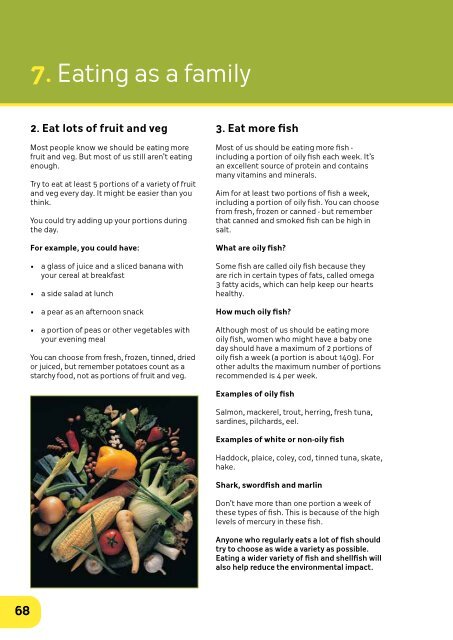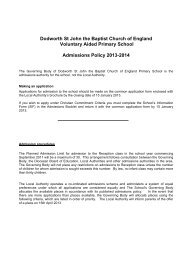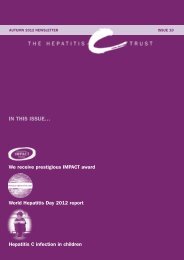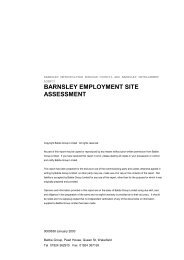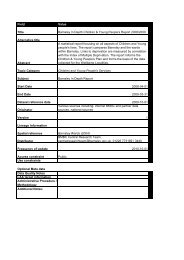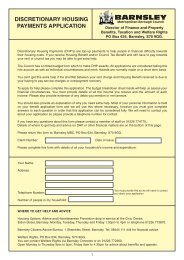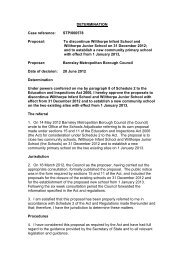Food and Nutrition Guidelines - Barnsley Council Online
Food and Nutrition Guidelines - Barnsley Council Online
Food and Nutrition Guidelines - Barnsley Council Online
Create successful ePaper yourself
Turn your PDF publications into a flip-book with our unique Google optimized e-Paper software.
7. Eating as a family<br />
2. Eat lots of fruit <strong>and</strong> veg<br />
Most people know we should be eating more<br />
fruit <strong>and</strong> veg. But most of us still aren’t eating<br />
enough.<br />
Try to eat at least 5 portions of a variety of fruit<br />
<strong>and</strong> veg every day. It might be easier than you<br />
think.<br />
You could try adding up your portions during<br />
the day.<br />
For example, you could have:<br />
• a glass of juice <strong>and</strong> a sliced banana with<br />
your cereal at breakfast<br />
• a side salad at lunch<br />
• a pear as an afternoon snack<br />
• a portion of peas or other vegetables with<br />
your evening meal<br />
You can choose from fresh, frozen, tinned, dried<br />
or juiced, but remember potatoes count as a<br />
starchy food, not as portions of fruit <strong>and</strong> veg.<br />
3. Eat more fish<br />
Most of us should be eating more fish -<br />
including a portion of oily fish each week. It’s<br />
an excellent source of protein <strong>and</strong> contains<br />
many vitamins <strong>and</strong> minerals.<br />
Aim for at least two portions of fish a week,<br />
including a portion of oily fish. You can choose<br />
from fresh, frozen or canned - but remember<br />
that canned <strong>and</strong> smoked fish can be high in<br />
salt.<br />
What are oily fish?<br />
Some fish are called oily fish because they<br />
are rich in certain types of fats, called omega<br />
3 fatty acids, which can help keep our hearts<br />
healthy.<br />
How much oily fish?<br />
Although most of us should be eating more<br />
oily fish, women who might have a baby one<br />
day should have a maximum of 2 portions of<br />
oily fish a week (a portion is about 140g). For<br />
other adults the maximum number of portions<br />
recommended is 4 per week.<br />
Examples of oily fish<br />
Salmon, mackerel, trout, herring, fresh tuna,<br />
sardines, pilchards, eel.<br />
Examples of white or non-oily fish<br />
Haddock, plaice, coley, cod, tinned tuna, skate,<br />
hake.<br />
Shark, swordfish <strong>and</strong> marlin<br />
Don’t have more than one portion a week of<br />
these types of fish. This is because of the high<br />
levels of mercury in these fish.<br />
Anyone who regularly eats a lot of fish should<br />
try to choose as wide a variety as possible.<br />
Eating a wider variety of fish <strong>and</strong> shellfish will<br />
also help reduce the environmental impact.<br />
68


